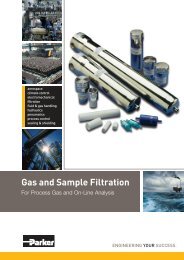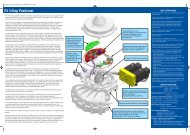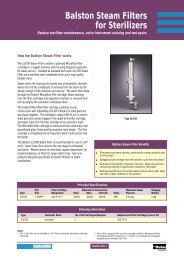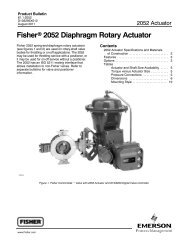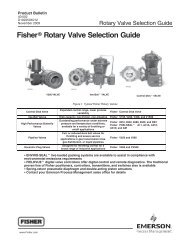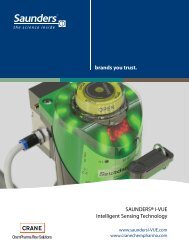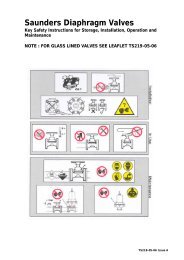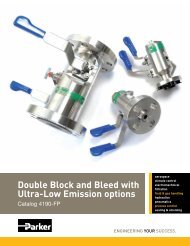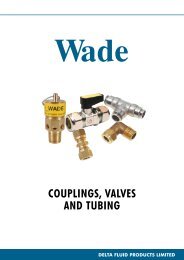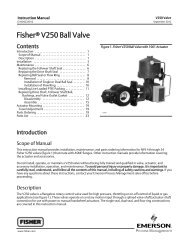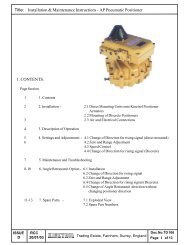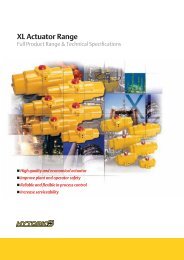Fisher® FIELDVUE DVC6200 Digital Valve Controller
Fisher® FIELDVUE DVC6200 Digital Valve Controller
Fisher® FIELDVUE DVC6200 Digital Valve Controller
Create successful ePaper yourself
Turn your PDF publications into a flip-book with our unique Google optimized e-Paper software.
Instruction Manual<br />
D103605X012<br />
Configuration<br />
July 2012<br />
Zero Power Condition—The position of the valve (open or closed) when the electrical power to the instrument is<br />
removed. Zero Power Condition (ZPC) is determined by relay type, as shown in figure 3‐3.<br />
Figure 3‐3. Zero Power Condition<br />
A<br />
B<br />
Relay Type<br />
Single‐Acting Direct (Relay A or C)<br />
Double‐Acting (Relay A)<br />
Single‐Acting Reverse (Relay B)<br />
Loss of Electrical Power<br />
Port A pressure to zero.<br />
Port A pressure to zero.<br />
Port B pressure to full supply.<br />
Port B pressure to full supply.<br />
Travel Sensor Motion<br />
WARNING<br />
If you answer YES to the prompt for permission to move the valve when determining travel sensor motion, the instrument<br />
will move the valve through a significant portion of its travel range. To avoid personal injury and property damage caused<br />
by the release of process fluid or pressure, isolate the valve from the process and equalize pressure on both sides of the<br />
valve or bleed off the process fluid.<br />
Select Clockwise/Toward Bottom, or Counterclockwise/Toward Top. Travel Sensor Motion establishes the proper<br />
travel sensor rotation. For quarter‐turn actuators determine rotation by viewing the rotation of the magnet assembly<br />
from the back of the instrument.<br />
Note<br />
Travel Sensor Motion in this instance refers to the motion of the magnet assembly. Note that the magnet assembly may be<br />
referred to as a magnetic array in user interface tools.<br />
For instruments with Relay A and C: If increasing air pressure at output A causes the magnet assembly to move<br />
down or the rotary shaft to turn clockwise, enter CW/To Bottom Inst. If it causes the magnet assembly to move up,<br />
or the rotary shaft to turn counterclockwise, enter CCW/To Top Inst.<br />
For instruments with Relay B: If decreasing air pressure at output B causes the magnet assembly to down, or the<br />
rotary shaft to turn clockwise, enter CW/To Bottom Inst. If it causes the magnet assembly to move up, or the rotary<br />
shaft to turn counterclockwise, enter CCW/To Top Inst.<br />
Maximum Supply Pressure<br />
Enter the maximum supply pressure that is required to fully stroke the valve.<br />
29



